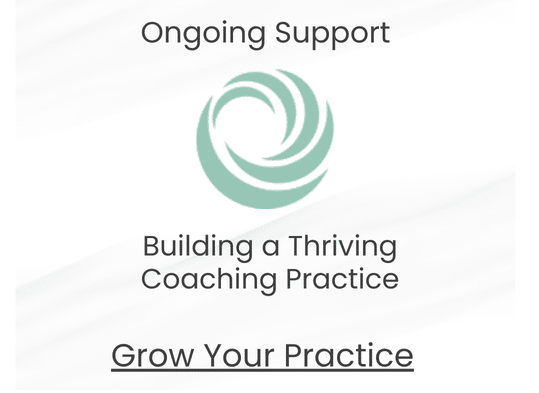by Sherry Kelly, PhD
How does a psychologist and avid golfer weather a hurricane? I have been golfing longer than I have been practicing psychology. And I have weathered a few hurricanes, including the “big one,” Hurricane Andrew, in 1992. My training as a psychologist and my coaching as a golfer have proved positively to me that one can “shoot par” even in the worst of storms.
Since Hurricane Irma hit our area a couple of weeks ago, several people have asked me about my strategies for staying positive. Twenty-five years ago, while I was in graduate school in New York, I heard a brilliant professor, Shlomo Breznitz, PhD, give a lecture on the psychology of false alarms and the stress of hurricane preparedness. Ironically, a few months after graduating from the program, I was with family in Miami preparing for Andrew.
While some neighbors anxiously filled up their gas tanks and grocery carts, and others ineffectively anticipated the storm in a motionless state of anxiety, I—thanks to Dr. Breznitz’s lecture—prepared for the hurricane a few days in advance and then took advantage of the breezy conditions that heralded its arrival. The day before the storm, my cousins and I enjoyed a stress-busting round of golf in 25 mile-per-hour gusts that propelled my ball farther than it had ever gone. We made more pars that pre-Andrew day than ever before, or ever since.
Do I remember how bad Hurricane Andrew was? Yes. Do I feel sorrow for the loss and destruction of a beloved town? Yes. Even though my cousins lost their house in the hurricane, we still smile about the day we shared together before it hit, defying Andrew’s wrath by being happy.
Over the summer, I completed WBI’s Positive Psychology Coaching course. The experience ignited inner resources long buried in dust from having placed my professional life o the shelf for full-time motherhood. It awoke in me a new passion for tapping into the coping resources within my “inner golf bag.”
In life, we face many types of storms. We will have to endure some storms in which we have little or no control over what we must face. However, we do have control over how we prepare, react, accommodate to, and reframe the circumstances of the storm. I call this “shooting PAR,” and it represents three phases of utilizing positive psychology: Prepare, Accommodate, and Reframe.
Prepare.
Identify the storm (the stressor) that’s ahead of you. Anticipate and prepare by shielding yourself with the armor of positive psychology. Decide before the crisis how to prepare physically and emotionally for the situation. Be mindful of your needs, but also of your goals. Prepare with a purpose, asking yourself, “How do I want to come out of this situation?” Set goals for how you would like to manage stressful situations, not simply react to them. Decide before the crisis what steps you can take to prepare for and ultimately manage the feelings of fear, doubt, and anger. Prepare for emotional setbacks and look at how you can best overcome negative self-talk, as well as the criticism of others who are also coping with the stress. For example, before Irma, our family talked about our feelings of fear and what we would do if we needed to evacuate or change plans mid-storm.
One positive strategy for feeling more prepared and in control is to get yourself and your family members involved in concrete tasks. Make preparation fun and positive, but keep moving forward. In our storm situation, each family member was assigned to get specific supplies and do their individual part in preparing the house.
Prepare with a purpose and don’t only focus on yourself. Take the “I,” the “me,” and the “mine” out of the situation by focusing on goals. One important purpose I had was to model positive behavior in a crisis situation, as well as teach my daughter how to prepare in practical ways for a hurricane—skills that can be used through her lifespan, such as organizing important documents, placing photo albums in plastic bins, packing a first-aid kit, securing supplies in waterproof bags, and filling buckets with fresh water. I believe that the coping strategies and behaviors I modeled will pay off for her in future situations.
Another effective strategy was to engage in activities that would help others prepare and allow us to be a positive light for them. For example, our family helped evacuate some elderly friends to hotels before the storm. We also checked on the homes of neighbors who were forced to evacuate.
Several days before the hurricane, I went shopping at Home Depot for roof tarp and wing nuts for the storm shutters. (Before moving to the beach, I thought wing nuts were a treat you had with a beer!) My bubble of confidence in my preparation tactics quickly burst when an older gentleman in an orange apron informed me that the wing nuts and tarps had sold out. He said, “Young lady, at this point you need buckets—a lot of them! You need buckets for leaks, buckets for water, buckets for food, and buckets for mess. Buckets for bad stuff and buckets for good stuff!” I bought a dozen large buckets. The nice man proved himself right: During the storm, our roof leaked and water poured from the ceiling. I had my buckets ready. The buckets became a metaphor for what I would prepare for and carry with me to the other side of the storm. Do you have your buckets ready?
Accommodate.
We live in a world where we are bombarded with negativity, but how we perceive our experiences and compartmentalize events can help us manage life’s stressors. A wise teacher once told me that stress is “resistance to what is.” Ask yourself what about the situation (in my case, the storm) you may be resisting. Is it the stress of preparing in advance, or of not making the right decision?
In the midst of your storm, don’t dwell on past experiences or focus on what you could or should have done. Instead, stay in the present. Imagine yourself moving forward through the experience. Don’t blame those around you. Cloak yourself with a shield of positivity. Try to find bits of gratitude for each step forward that you take through the storm. Try to do something positive for someone else. Always breathe!
Reframe.
How we process a situation, even a stressful one, will ultimately shape our memory of it. This is how the previous two steps in PAR, preparation and accommodation, will “tee you up” for positive reframing. In your mind, build a positive frame around the experience. Deciding to positively rethink and reframe an event will propel you forward and upward. Rather than dwelling on the negative, actively think about the situation in a positive way. What did you do right? What did you learn? How did you model positive behaviors for others? Think of your mind as a giant file cabinet. How you file information will later dictate how you find it.
Positively reframing situations takes practice. Remember that resilience builds upon self-efficacy. Enhance the reframing stage with gratitude and thanks. Find a pebble of positivity in every situation, and a mountain of possibilities will emerge on your horizon.
Parting golf tip for positivity: It’s not about your last shot, it’s about your next shot!
Sherry Kelly, PhD, is a licensed clinical psychologist and clinical neuropsychologist. She earned her PhD and MA in Clinical Health Psychology from Yeshiva University, and also holds an MA in Counseling Psychology from NYU. A lecturer, columnist, and clinical researcher, Sherry has also been a guest caddy for a PGA tournament.


 Sherry Kelly, PhD, is a licensed clinical psychologist and clinical neuropsychologist. She earned her PhD and MA in Clinical Health Psychology from Yeshiva University, and also holds an MA in Counseling Psychology from NYU. A lecturer, columnist, and clinical researcher, Sherry has also been a guest caddy for a PGA tournament.
Sherry Kelly, PhD, is a licensed clinical psychologist and clinical neuropsychologist. She earned her PhD and MA in Clinical Health Psychology from Yeshiva University, and also holds an MA in Counseling Psychology from NYU. A lecturer, columnist, and clinical researcher, Sherry has also been a guest caddy for a PGA tournament.







Sherry, this article is so helpful…both pragmatic and aspirational. Given the crazy weather of late, and dire news stories across the board, your advice is so spot on. Thank you for writing it.
Thank you, Megan! My appreciation to you, Lynda, Phoebe, Nicole and the WBI “family” is boundless. The WBI experience this summer was amazing — a transformative way of expanding Positive Psychology into practice. One of the best weeks of my life!